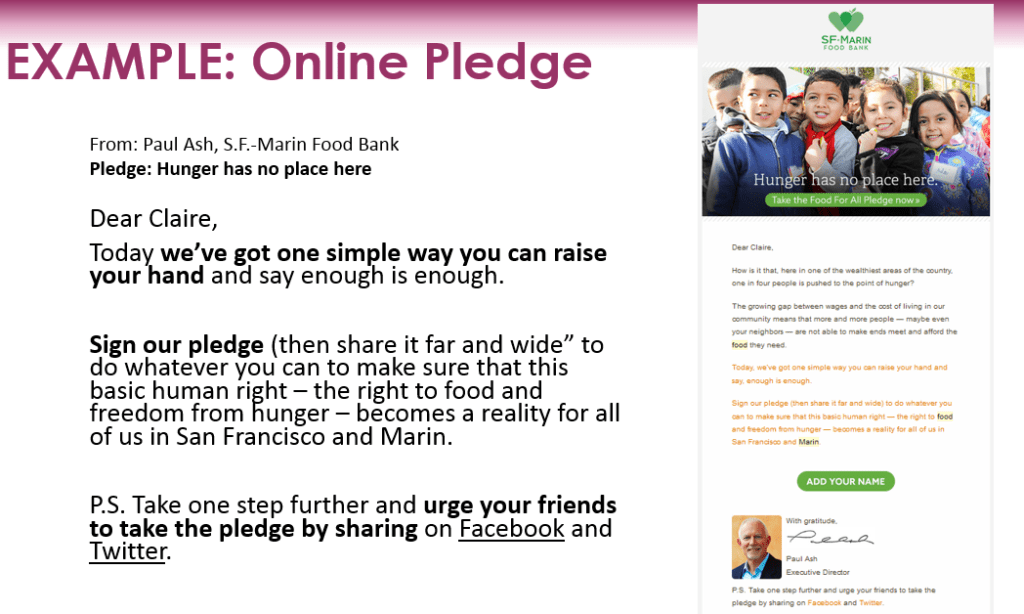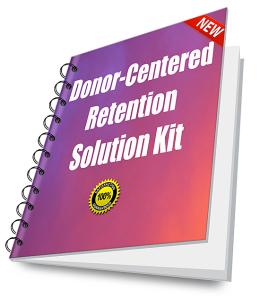
The more publicly people commit, the more resistant they are to changing their minds
I recently happened on an article by Otis Fulton and Katrina VanHuss of Turnkey, Trump Buyer’s Remorse? Not Likely…. It relates to one of Robert Cialdini’s principles of influence and persuasion: “commitment and consistency.”
The main point is this:
Because we are wired to want to be consistent.
That to which we commit becomes congruent with our self image.
What does this mean for you as a fundraiser?
Do whatever you can to solidify your donor’s commitment.
How might you do this?
The aforementioned article cites a famous study by Morton Deutsch and Harold Gerard looking at conditions that might incline or disincline people to change their minds after finding out they’d made a wrong choice or exercised poor judgement. Researchers asked three groups to answer the same question.
- Group #1 was asked to answer privately (in their minds).
- Group #2 was asked to record their answers on a device that allowed them to erase what they wrote immediately.
- Group #3 was asked to jot down their answer on a piece of paper, sign it, and hand it in.
When shown their answers were incorrect, those in Group #3 were by far the most unwilling to admit their error. They stayed strong – their commitment to what they’d written and signed to was unwavering.
The more publicly people commit, the more resistant they are to changing their minds.
How can you leverage the results of this experiment, and all of Cialdini’s research on commitment, to improve your fundraising results?
It turns out that writing things down has an almost magical power.
When travelling salespeople began asking customers to fill out their own sales forms, rather than completing them on their behalf, less people took advantage of the “cooling-off” laws where they could regret and return the product.
TO-DO: Imagine simply asking folks to sign a pledge, return a postcard, wear a pin, sport a bumper sticker, affix a fridge magnet, or raise their hands at an event declaring proudly:
“I support justice for all.”
“Urban dwellers deserve a garden oasis escape.”
“I support clean water.”
“Heath care access is a basic human right.”
“I support empowering girls and women.”
“No one should sleep on the streets.”
“I will fight for those who fought for us.”
“I am a Greenpeace supporter.”
“I am an NPR member.”
Once you’ve successfully encouraged folks to take a stand, be sure to ask folks to share their pledge with their friends — which will reinforce their commitment!
Let me show you an example from the San Francisco and Marin Food Bank:

Use the power of commitment and consistency to secure new donors
If you can get someone engaged at an entry level of commitment, you’re more likely to get them to recommit at higher levels.
Commitment can be as simple as saying “yes” to follow you. For example, behavioral design expert Yu-kai Chou reports that a restaurant owner shared that after he switched from “Please call if you have to cancel” to “Will you please call if you have to cancel?,” no-shows dropped from 30% to 10%. By simply answering “yes” aloud, people felt more committed to take responsibility for their reservations.
TO-DO: Ask for “likes” and “follows” on social media. Once they’ve said “yes” to following you, ask them to retweet you or share your video. Then ask them to do something else, like make a pledge or contact their congressperson. And so on. In between these asks, be sure to provide them with valuable content so it’s not all about you.
Use the power of commitment and consistency to drive donor retention.
Once a donor gives to you, they have their foot in the door.
It’s your job to welcome them to step through that door and, hopefully, take a seat at the table.
If you fail to notice they’re halfway in, they’ll be more likely to walk backwards than walk forwards. Sadly, too many nonprofits fail to leverage the power of demonstrated commitment. Which is why donor retention rates are abysmal.
Once folks have committed to you in any way, they’re more likely to continue — and repeat their past behaviors — because of a deep need to be perceived as consistent. So use your leverage!
TO-DO: Remind folks they’ve given to you (or attended your event … or volunteered … or signed your petition) in the past. Then thank them for making such a good decision. Also demonstrate the positive outcome that resulted.
When we make decisions, like to feel we made right one
People who make commitments tend to follow through w/those commitments—and repeat their past behaviors—because of a deep need to be perceived as consistent.
Seek commitments; then remind folks of the commitments they made.
That way, your donors won’t have to do the hard work to determine whether they should/shouldn’t participate. They already have a “foot in door.” Now it’s just a question of how much more they’ll engage and invest.
If you leverage the power of commitment and consistency it serves as a powerful, and profitable, decision-making shortcut.
Want More Donor Retention Tips?
 Get my Donor Retention and Gratitude Playbook with 6 separate companion guides (purchase individually or at a bundle bargain discount). Taken together, they include everything you need to raise more money — by keeping more current donors and increasing their average gift! It’s filled with hands-on, practical information garnered from my 30+ years working in the nonprofit trenches. The Attitude of Gratitude Donor Guide alone is 98 full pages, with lots of ready-to-use samples and templates. You’ll save almost a third if you buy them all together in the ‘bargain bundle’ (even more if you’re an enrolled Clairification student). I promise if you read these E-Guides, and put the recommended strategies into action, you’ll keep more donors and raise more dollars.
Get my Donor Retention and Gratitude Playbook with 6 separate companion guides (purchase individually or at a bundle bargain discount). Taken together, they include everything you need to raise more money — by keeping more current donors and increasing their average gift! It’s filled with hands-on, practical information garnered from my 30+ years working in the nonprofit trenches. The Attitude of Gratitude Donor Guide alone is 98 full pages, with lots of ready-to-use samples and templates. You’ll save almost a third if you buy them all together in the ‘bargain bundle’ (even more if you’re an enrolled Clairification student). I promise if you read these E-Guides, and put the recommended strategies into action, you’ll keep more donors and raise more dollars.
-
Pingback: Get Started Upgrading and Retaining More Donors through Monthly Giving
-
Pingback: Annual Fundraising: Influence “Yes” Using Psychology and Neuroscience
-
Pingback: [ASK AN EXPERT] What to Do When You’re Notified Your Organization is in Someone’s Will





